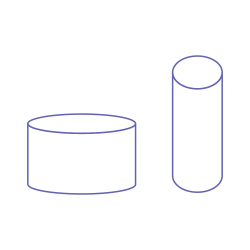E2.3 Use non-standard units appropriately to estimate, measure, and compare capacity, and explain the effect that overfilling or underfilling, and gaps between units, have on accuracy.
Activity 1: Measuring the Capacity of Various Objects
Goal
In this activity, students measure the capacity of various objects.
Materials
- several containers of various shapes (small and large)
- several items that can be used as units of measurement (for example, a spoon, a small glass, a thimble, a small pill container)
- rice
- sand
- unpopped corn or beans, etc.
Instructions
Form teams of two.
Provide students with several objects that can be used as containers. Ensure that students can use units of measurement (a spoon, a small glass, a thimble, a small pill container).
Provide students with filling materials (rice, sand, cereal, dried beans).
Invite students to approximate the capacity of objects using one or more units of measurement.
Examples
- The capacity of this can of peas is approximately the same as 25 tablespoons.
- The cereal box has approximately the same capacity as 8 coffee cups.
- The capacity of one pot is approximately the same as 18 small glasses.
Source: translated from L'@telier - Ressources pédagogiques en ligne (atelier.on.ca), p. 1.
Activity 2: Capacity - Guess Which One Contains the Most…
With rice, students estimate and compare the capacity of two different containers:
- the tube from a roll of paper towels and a 500 mL measuring cup;
- the tube from a roll of toilet paper and a box of toothpaste;
- a circular can (for example, salmon) and a small container of margarine;
- take two identical sheets of paper, one rolled horizontally and one rolled vertically.

They must estimate which of the two cylinders has the greater capacity.
To test their hypothesis, students:
- enter the longest cylinder inside the shortest cylinder;
- fill the longest cylinder without dropping any rice into the other cylinder;
- gently lift the filled cylinder so that the rice comes out the bottom;
- completely remove the longest cylinder.
This activity explores the fundamental concept of conservation. Even if the container takes a different form, the capacity remains the same.
Source: translated from L'@telier - Ressources pédagogiques en ligne (atelier.on.ca), p. 2.
